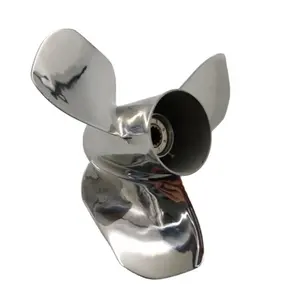
Wholesale Outboard Boat Propeller 3 Blade Yamaha Propellers 13X21 Boat Propeller For Yamaha Marine Gasoline Engine 50-130hp

Marine Propellers 25-60HP 12 X 13 STAINLESS STEEL MARINE OUTBOARD PROPELLER Prop Matched For YAMAHA Boat Engine




















Selecting the appropriate diesel engine driven bow thruster is crucial for the operational efficiency of maritime vessels. This type of bow thruster is an integral component for enhancing a boat's maneuverability, particularly during docking and navigating through tight spaces. The effectiveness of a bow thruster is largely determined by the compatibility of its specifications with the vessel's design and operational requirements.
There are various types of marine bow thrusters tailored to different vessel sizes and navigational needs. The application of a diesel-powered bow thruster extends across commercial shipping, leisure crafts, and specialized marine vessels. Each type is designed to provide the necessary thrust, considering factors such as the boat's displacement and the water conditions it typically encounters.
The propeller is a critical component of any bow thruster for boats. Typically, a three-blade propeller is utilized for its efficiency in balancing performance and comfort. Propellers are crafted from various materials, including stainless steel and bronze, each offering durability and resistance to the aquatic environment. The choice of material impacts the longevity and maintenance frequency of the boat bow thruster.
Performance features of diesel engine bow thrusters include the diameter and dimensions of the propeller blades, which directly influence the vessel's speed and fuel efficiency. Larger blades can enhance the boat's stern lift, improving overall performance. Additionally, azimuth thrusters provide superior horizontal maneuverability, a feature that is highly beneficial for larger ships requiring precise navigation.
Maintaining a diesel engine driven bow thruster is essential for preserving the vessel's fuel efficiency. Over time, propellers may incur wear and tear, leading to increased fuel consumption. Regular inspection and replacement of the bow thruster can prevent such inefficiencies and ensure the vessel operates at its optimal capacity.
In conclusion, the selection of a diesel engine driven bow thruster should be made with careful consideration of the vessel's specific needs and operational conditions. Understanding the various types, materials, and performance features is essential for any maritime operator looking to enhance their vessel's maneuverability and efficiency.